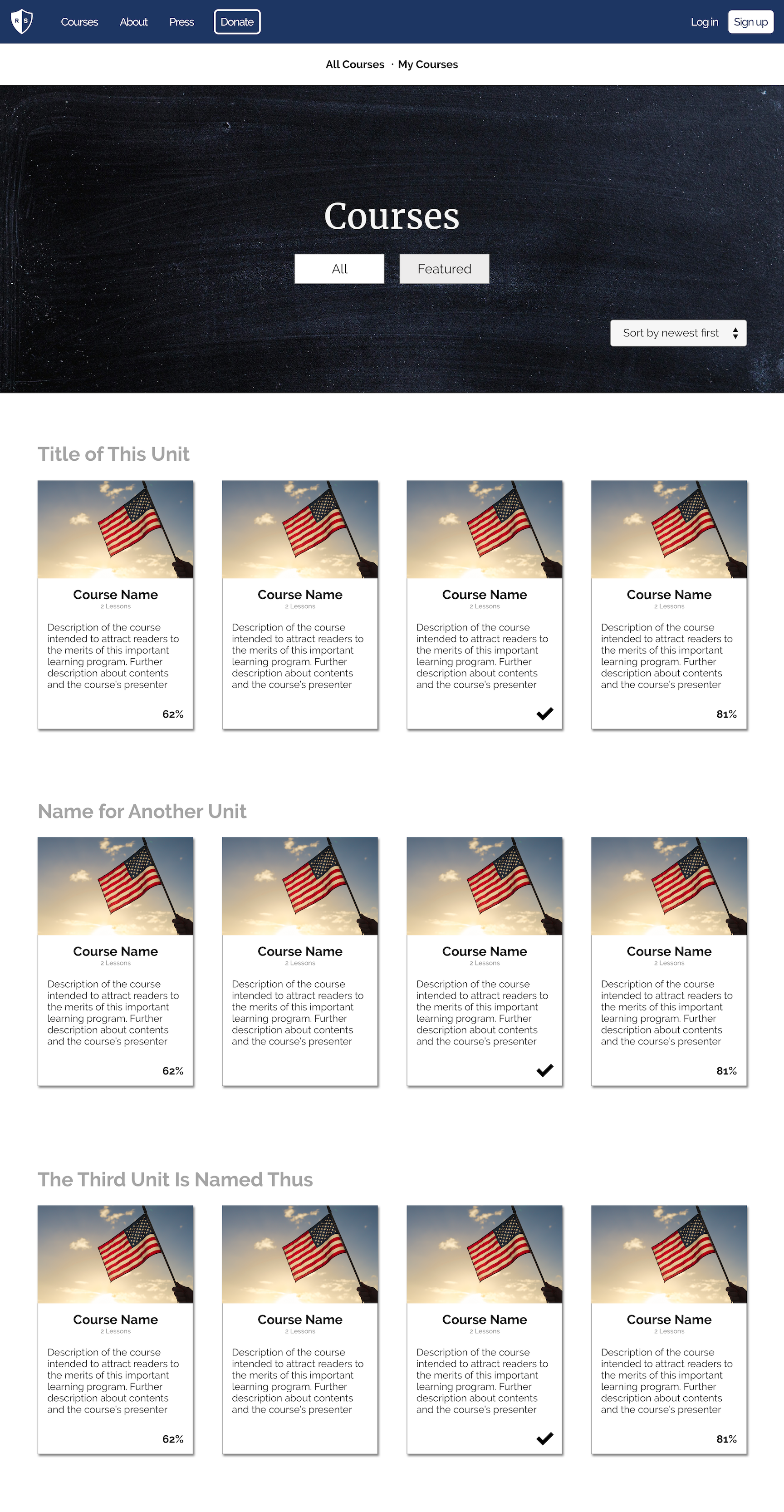ACTIVIST LEARNING PLATFORM
an end-to-end UX design project for Resistance School (2017-2018)
Replatforming for effectiveness
“The Khan Academy of civic engagement”
Resistance School started as an in-person and Facebook Live-based lecture series on civic action and community building based out of Harvard University. As their popularity exploded and library of material evolved, I was brought on board to design a service to not only house that library, but give it direction and keep learners engaged.
The founders’ vision for such a service would be to mimic popular education services for the sake of familiarity, while sprinkling in features to spur engagement, user retention, earnest learning, and enough confidence to move one’s online action offline.
Competitive analysis
Learning how to make knowledge stick
The product itself was largely inspired by the flow of sites like Coursera, Udemy, and Codecademy, who opt to actually increase friction in order to ensure users hold onto what they learn, rather than allowing them to drift through videos and “phone in” learning. We chose to mimic this idea by adding a brief quiz at the end of each of our courses to ensure users can recall key points from earlier in the lesson. Users are allowed to “graduate” from courses irrespective of quiz score, and are given explanations for incorrect answers.
When examining our own Facebook Live content, we found that users made great use of the chat feature — we saw lots of rallying behind speakers and healthy discourse around the topics being presented. In order to preserve that spirit of discourse, we made a point of adding a comments section to each video in our courses.
Scoping a solution
An Education program built to inspire confidence
One key aspect of Resistance School’s flow was “graduation” — at the end of each course, users are given a selection of activist organizations to join up with whose missions and activities are directly relevant to the course they just took. As a result of the founders’ connections, this included organizations as major as Indivisible, Flippable, and Women’s March, so users are invited into recognizable territory.
For users who are not yet ready to volunteer with an activist organization, the same view that recommends organizations also recommends more similar courses. Additionally, each course comes with resources and optional homework to complete outside Resistance School to prime users for participating off-platform.
Click on an image to enlarge
Single Course
Splash Page
Connect To Action ("Graduation")
Course Selection
Quiz
Launch and metrics
Users weren’t finding courses directly suited for them
Shortly after launch in July 2018, we received public support from Hilary Clinton and Sen. Elizabeth Warren as well as a feature in The Nation, which gained not only adoption from our existing user base, but an entirely new audience of activists preparing for the midterm elections. Unmoderated usability tests showed users following ideal flows, and analytics performed as expected, including a non-trivial number of users connecting to action!
However, the same analytics and unmoderated usability tests just after launch revealed that users weren't scrolling past the first row on the course selection screen, meaning only a few courses were ever being taken. This meant that while users were following ideal-seeming paths, they only followed those paths in a narrow context. leaving a lot of our content unnoticed.
Iteration
A “smarter” approach to learning paths
I added clarity to course selection by adding learning paths to the onboarding flow and course selection screen, instructing users in how to proceed through the course selection. Additionally, I added a carousel for featured lessons to the header and more obviously exposed in-progress courses as backups in case the learning paths didn't work. Fortunately, this addition evened out pageviews across almost all of our courses, indicating that visitors were traveling more thoroughly through the course selection.







